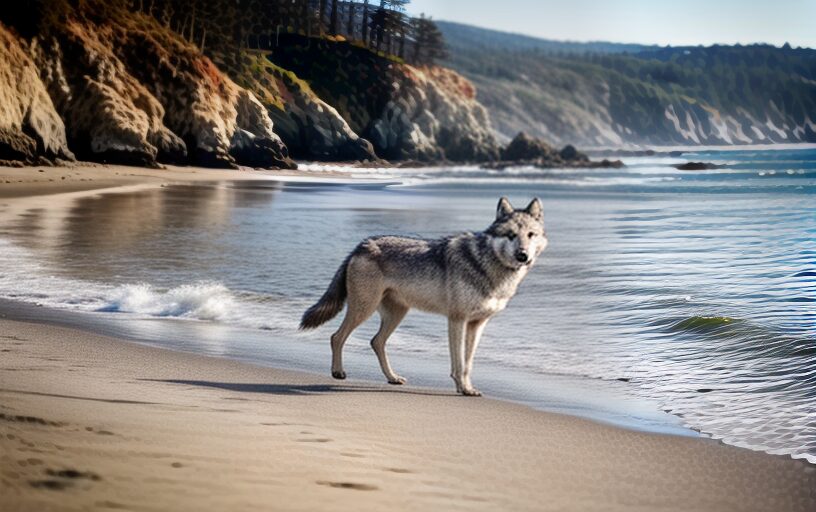90 years ago, in 1924, the last gray wolf was shot in Northern California, rendering them eradicated from the state. In the past two years, however, they have made a surprising return to their native grounds. With seven packs and over 50 wolves roaming the state, including a record number of 30 pups born this spring, their comeback is nothing short of historic. Though these numbers are still much smaller than their population years ago, and you won’t encounter a wolf on your morning hike through Coyote Point or the Hills of the Peninsula, their resurgence speaks to a larger story of wildlife conservation and Northern California’s role in preserving its historical landscape.
The wolves now inhabiting parts of Northern California are descendants of the famous wolf, OR-7, who made its way down into Siskiyou County from Oregon in 2011. Four years later, the first pack since the 1920s was formed. The past two years, however, have seen an immense shift, more than doubling the total population and moving further away from the border. In parts of Yosemite, the return of gray wolves has promoted its natural ecosystem as deers avoid large parts of the park, allowing vegetation to grow faster, trees to grow taller, allowing beavers to return to the rivers, and encouraging more ecological diversity.
Though these wolves remain far from urban centers, the Bay Area has played a key role in supporting wildlife conservation efforts. Organizations like the California Wolf Center and Defenders of Wildlife are working to educate the public and lobby for policies that protect wolves nationwide. For anyone interested in learning more about these animals and their impact on California’s landscape, the Oakland Zoo’s California Trail exhibit highlights the animals that once roamed the state, including wolves. While the zoo doesn’t have wolves in captivity, it’s an excellent place to learn about the region’s top predators, from grizzly bears to mountain lions—species whose stories are intertwined with that of the gray wolf. On the Peninsula, Curiodyssey also devotes itself to highlighting the species native to the Bay Area, and, though wolves are also not in captivity there, their importance to the native ecosystem can be felt.
More Helpful Articles
Ride into summer with the San Mateo County Fair
Next week, a Bay Area staple, the San Mateo County Fair, returns! Whether you are a music or thrill lover, the fair has something for everyone. The fair officially opens on May 30 at 4 p.m. and will run a series of events through June 8. Every day will deliver unique...
Off the Grid Rolls into Foster City
A local favorite, Off the Grid, recently debuted its new location in Foster City, and it can’t be missed! It offers the perfect mid-week escape with weekly events every Wednesday from 5 to 9. The trucks will be set up at Leo J. Ryan Park, which sits along the...
Wind down with the San Francisco Zoo!
As the days get longer, the San Francisco Zoo makes the perfect day trip for Bay Area Residents. There is a one-hour session monthly, and registration grants guests access to the zoo for the whole day! The zoo brings fun for all ages, from relaxing events such as Zen...






Recent Comments